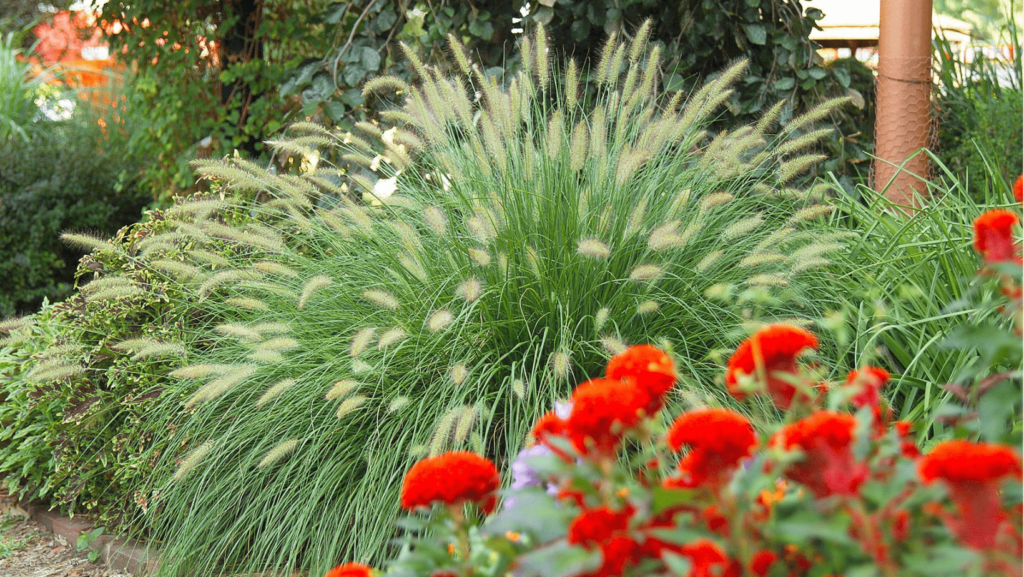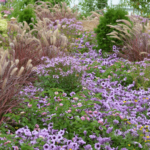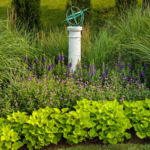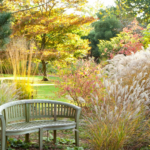What is Fountain Grass
Pennisetum, the scientific name for fountain grasses, is an attractive ornament to any landscape. They provide gardens and containers a touch of elegance and texture with their soft, fluffy plumes and beautiful form. These decorative grasses, which are native to southern Asia and Africa, are available in a wide range of sizes, shapes, and colors, so there’s sure to be a match for any style.
What is Maiden Grass
Most species of fountain grass grow well in USDA hardiness zones where they are pleasant to cultivate and require little maintenance, making them excellent perennials. They can still be planted as annuals outside of these zones to provide a pop of color and texture. Even when not in bloom, this adaptable plant’s vase-like shape and airy foliage make for an eye-catching presence. During the flowering season, its silvery seed heads add an additional dimension of appeal. Dwarf versions are available for smaller gardens, and sterile forms can be selected to avoid undesired reseeding.
RELATED BLOG
- What to Plant with Maiden Grass-Top 13 Companions of Maiden Grass
How to Grow and Care for Morning Light Maiden Grass-3 Easy Steps
Height and Spread Comparison
| Characteristic | Maiden Grass | Fountain Grass |
|---|---|---|
| Height | 4-9 feet | 2-5 feet |
| Spread | 3-6 feet | 2-4 feet |
Maiden grass typically grows taller and wider than fountain grass, making it a more commanding presence in the garden.
Growth Rates and Patterns
Both grasses are known for their rapid growth, but they differ in their growth patterns:
- Maiden grass: Forms large, upright clumps with arching leaves
- Fountain grass: Grows in compact, mounded shapes with a more fountain-like appearance
Bloom Types and Colors
The inflorescences of these grasses add to their ornamental value:
- Maiden grass: Produces feathery, fan-shaped plumes in late summer to fall
- Fountain grass: Displays bottlebrush-like spikes that resemble fountains, hence its name
Both grasses offer a range of colors, from silvery-white to pink and copper tones, depending on the variety and season.
Foliage Characteristics
The leaves of maiden grass and fountain grass contribute significantly to their visual appeal:
- Maiden grass: Features long, slender leaves with a prominent midrib, often variegated in some cultivars
- Fountain grass: Has finer, more delicate foliage that creates a softer texture in the landscape
Both grasses offer year-round interest, with their foliage changing colors throughout the seasons, from green in spring to golden hues in fall and winter.
Now that we’ve explored the appearance and growth habits of maiden grass and fountain grass, let’s consider the ideal growing conditions for each of these ornamental grasses.
Ideal Growing Conditions

Now that we’ve explored the appearance and growth habits of maiden grass and fountain grass, let’s delve into their ideal growing conditions. Understanding these factors will help you choose the right grass for your landscape and ensure its thriving growth.
A. Climate zones
Both maiden grass and fountain grass are adaptable to various climate zones, but they have some differences:
| Grass Type | USDA Hardiness Zones |
|---|---|
| Maiden Grass | 5-9 |
| Fountain Grass | 5-9 (some varieties up to 10) |
Maiden grass tends to be more cold-hardy, while fountain grass varieties can tolerate slightly warmer climates.
B. Water needs
The water requirements for these grasses differ:
- Maiden grass:
- Moderate water needs
- Drought-tolerant once established
- Benefits from regular watering during dry spells
- Fountain grass:
- More drought-tolerant than maiden grass
- Requires less frequent watering
- Prefers soil to dry out between waterings
C. Soil preferences
Both grasses are adaptable to various soil types, but they have some preferences:
- Maiden grass:
- Thrives in well-draining, fertile soil
- Tolerates poor soil conditions
- Prefers slightly acidic to neutral pH (6.0-7.0)
- Fountain grass:
- Adapts to a wide range of soil types
- Prefers well-draining soil
- Tolerates slightly acidic to slightly alkaline pH (5.5-7.5)
D. Sunlight requirements
The sunlight needs of these grasses are similar:
- Maiden grass:
- Full sun to partial shade
- Best growth and flowering in full sun
- Tolerates light shade but may become floppy
- Fountain grass:
- Full sun
- Can tolerate light shade, but may not flower as profusely
Understanding these ideal growing conditions will help you make an informed decision when choosing between maiden grass and fountain grass for your landscape. Next, we’ll explore the maintenance and care requirements for these popular ornamental grasses.
Maintenance and Care
Now that we understand the ideal growing conditions for both maiden grass and fountain grass, let’s explore their maintenance and care requirements. Both grasses are relatively low-maintenance, but there are some key differences to consider.
Winter Care
Maiden grass and fountain grass have different winter care needs:
| Grass Type | Winter Care |
|---|---|
| Maiden Grass | Leave foliage standing for winter interest; cut back in early spring |
| Fountain Grass | Cut back to a few inches above ground level in late fall or early winter |
Pest and Disease Resistance
Both grasses are generally resistant to pests and diseases, making them excellent low-maintenance options. However, they may occasionally face issues:
- Maiden Grass: Susceptible to rust in humid conditions
- Fountain Grass: May experience root rot in poorly-drained soils
Fertilization Needs
These ornamental grasses have minimal fertilization requirements:
- Maiden Grass:
- Apply slow-release fertilizer in early spring
- Avoid over-fertilizing to prevent excessive growth
- Fountain Grass:
- Light fertilization in spring if soil is poor
- Generally thrives without additional feeding
Pruning Techniques
Proper pruning is essential for maintaining the health and appearance of both grasses:
- Maiden Grass:
- Cut back to 6-8 inches above ground in late winter or early spring
- Divide clumps every 3-4 years to maintain vigor
- Fountain Grass:
- Trim to 3-4 inches above ground in late winter
- Remove dead foliage throughout the growing season
With these maintenance practices in mind, let’s explore the various landscape uses for maiden grass and fountain grass.
Landscape Uses
Maiden Grass
- Container Gardening: Maiden grass can be grown in large containers, adding a touch of elegance to patios, balconies, or decks.
- Mass Planting: Mass planting maiden grass can create a stunning visual impact, especially when combined with other ornamental grasses or flowering plants.
- Accent Plant: Maiden grass can be used as an accent plant to draw attention to specific areas in the garden.
- Garden Design Applications: Maiden grass is versatile and can be incorporated into various garden styles, from modern to traditional. It can be used to create borders, privacy screens, or focal points.
Fountain Grass
- Container Gardening: Fountain grass is well-suited for container gardening and can be grown in large pots or planters.
- Mass Planting: Mass plantings of fountain grass can create a dramatic and eye-catching effect.
- Accent Plant: Fountain grass can be used as an accent plant to add texture and color to a garden.
- Garden Design Applications: Fountain grass is a versatile plant that can be incorporated into many garden designs, including prairies, meadows, and modern gardens. It can be used to create borders, focal points, or as a backdrop for other plants.
Environmental Impact
Maiden Grass
- Invasive Potential: Maiden grass is generally not considered invasive, as it has a clump-forming growth habit and does not spread aggressively.
- Erosion Control: Maiden grass can help prevent erosion on slopes or near water bodies due to its deep root system.
- Wildlife Benefits: Maiden grass provides habitat and food for various wildlife, including birds, butterflies, and bees.
- Native vs. Non-Native Status: Maiden grass is native to Asia, making it a non-native species in many parts of the world.
Fountain Grass
- Invasive Potential: Fountain grass can be invasive in some regions, particularly in warm, dry climates. It can spread aggressively and outcompete native plants.
- Erosion Control: Fountain grass can help prevent erosion, especially in areas with sandy or loose soil.
- Wildlife Benefits: Fountain grass provides nectar and pollen for pollinators, such as butterflies and bees.
- Native vs. Non-Native Status: Fountain grass is native to Asia, making it a non-native species in many parts of the world.
Choosing the Right Grass for Your Garden
When deciding between maiden grass and fountain grass, consider the following factors:
- Growth Habit: Maiden grass has a clump-forming habit, while fountain grass can be invasive in some regions.
- Environmental Impact: If you are concerned about environmental impact, maiden grass may be a better choice due to its lower invasive potential.
- Aesthetic Preferences: Both grasses have unique appearances and can add different textures and colors to your garden.
- Local Climate: Consider the climate in your area to determine which grass is best suited to your growing conditions.
By carefully considering these factors, you can select the perfect grass for your garden and enjoy its beauty for years to come.





